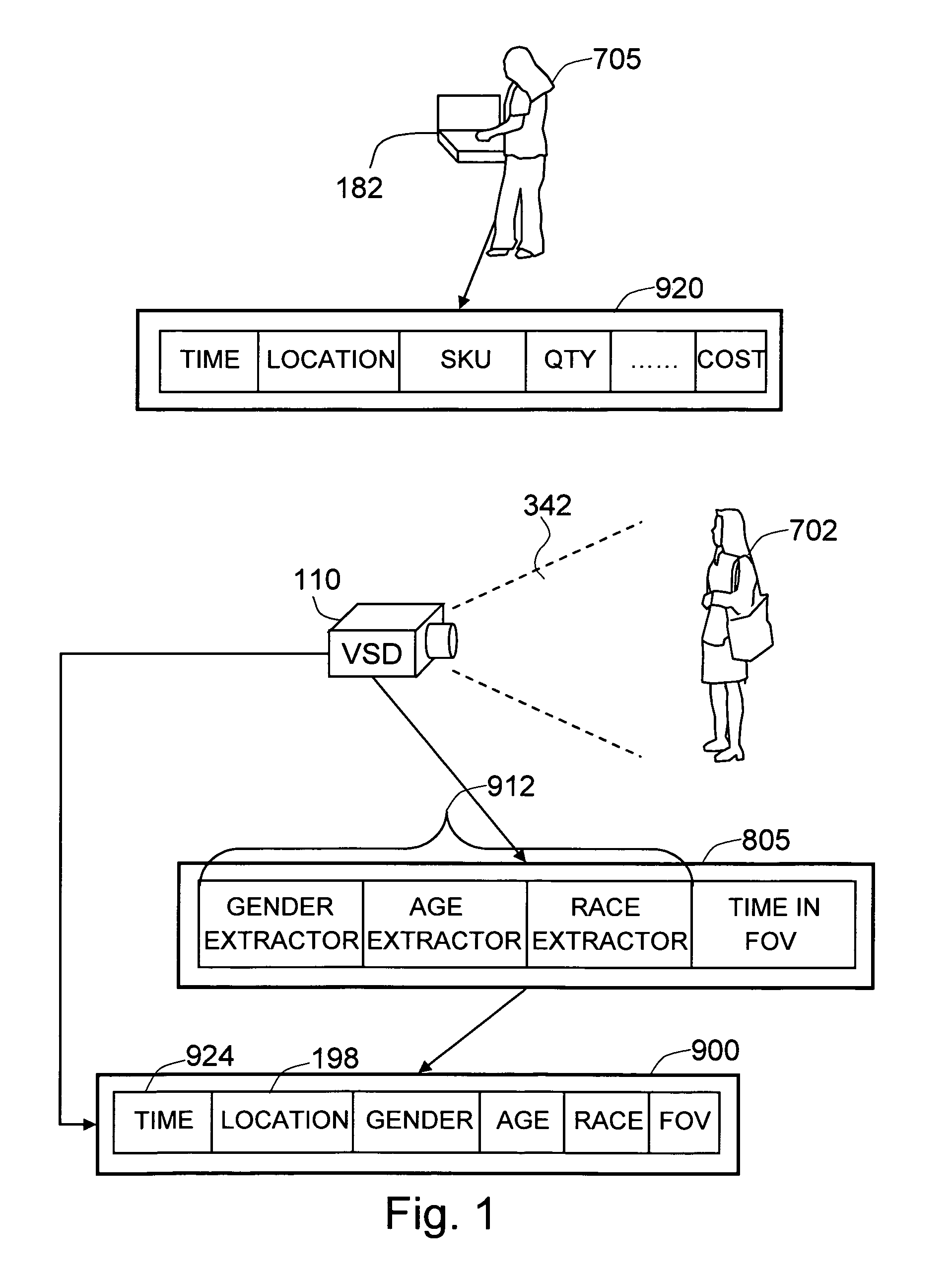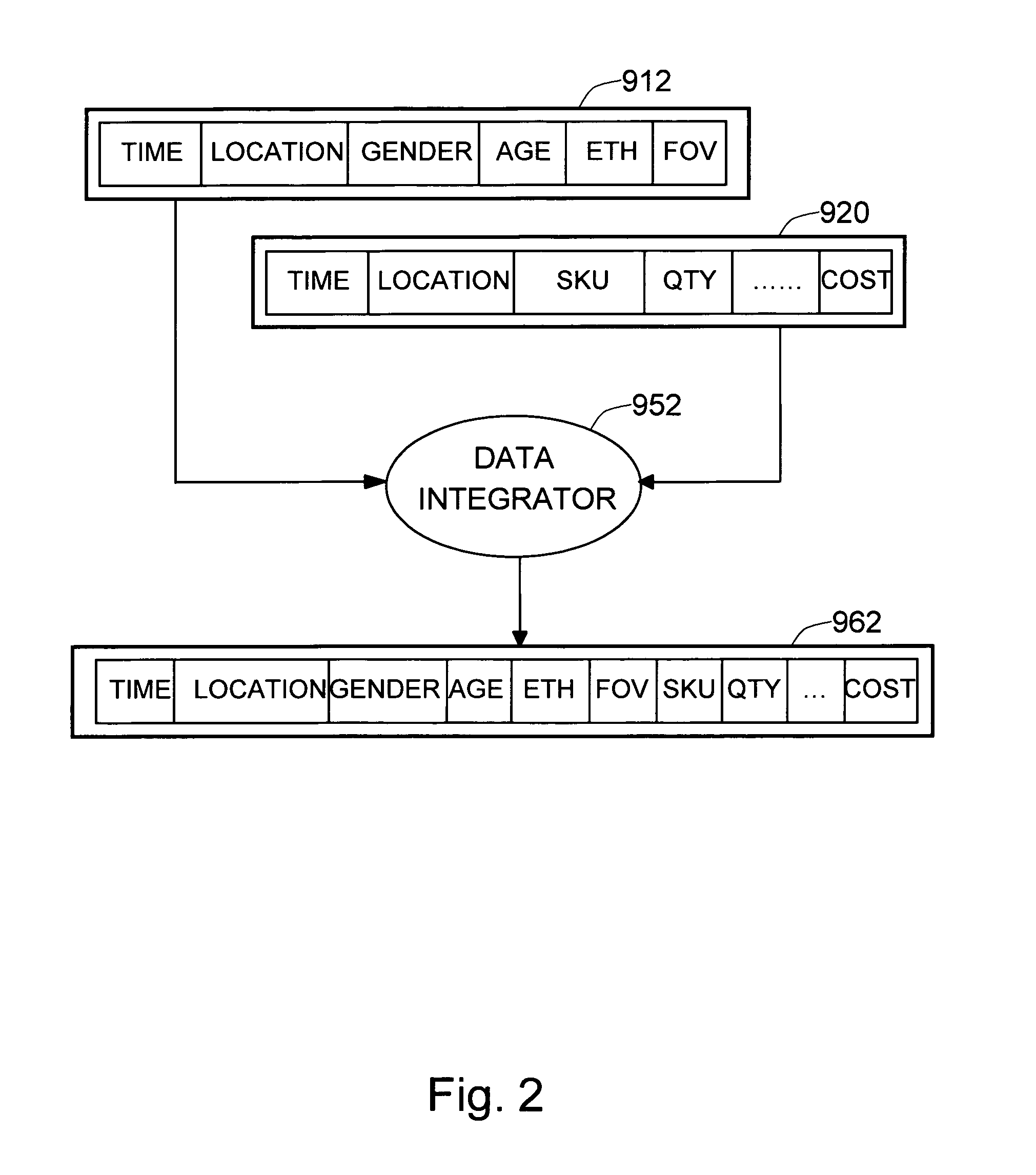Method for augmenting transaction data with visually extracted demographics of people using computer vision
a technology of computer vision and demographics, applied in the field of automatic measurement of visual perception, can solve the problems of ineffective spot survey, inconvenient use, inaccurate, etc., and achieve the effect of effective measurement of the performance of flm strategy, high profitability and positive shopping experien
- Summary
- Abstract
- Description
- Claims
- Application Information
AI Technical Summary
Benefits of technology
Problems solved by technology
Method used
Image
Examples
Embodiment Construction
[0050]The present invention provides a method and framework for extracting a consumer's demographic, behavior, and group information using computer vision algorithms and combining this information with the transaction records generated by the consumer transaction.
[0051]FIG. 1 shows an exemplary system overview of the present invention. The figure shows a cashier 705 registering a transaction using a transaction device 182. The transaction device 182, such as a cash register terminal, generates a transaction data 920. For purposes of illustration, the transaction contains the time that the transaction took place, the location where the transaction took place, the SKU number of the item purchased, the quantity purchased, and the cost of the item.
[0052]In the bottom portion of the figure, a customer 702 enters the field-of-view (FOV) 342. The visual sensing device (VSD) 110, such as a video camera, captures the face views 345 of the person in the FOV and sends them to the demographic f...
PUM
 Login to View More
Login to View More Abstract
Description
Claims
Application Information
 Login to View More
Login to View More - R&D
- Intellectual Property
- Life Sciences
- Materials
- Tech Scout
- Unparalleled Data Quality
- Higher Quality Content
- 60% Fewer Hallucinations
Browse by: Latest US Patents, China's latest patents, Technical Efficacy Thesaurus, Application Domain, Technology Topic, Popular Technical Reports.
© 2025 PatSnap. All rights reserved.Legal|Privacy policy|Modern Slavery Act Transparency Statement|Sitemap|About US| Contact US: help@patsnap.com



